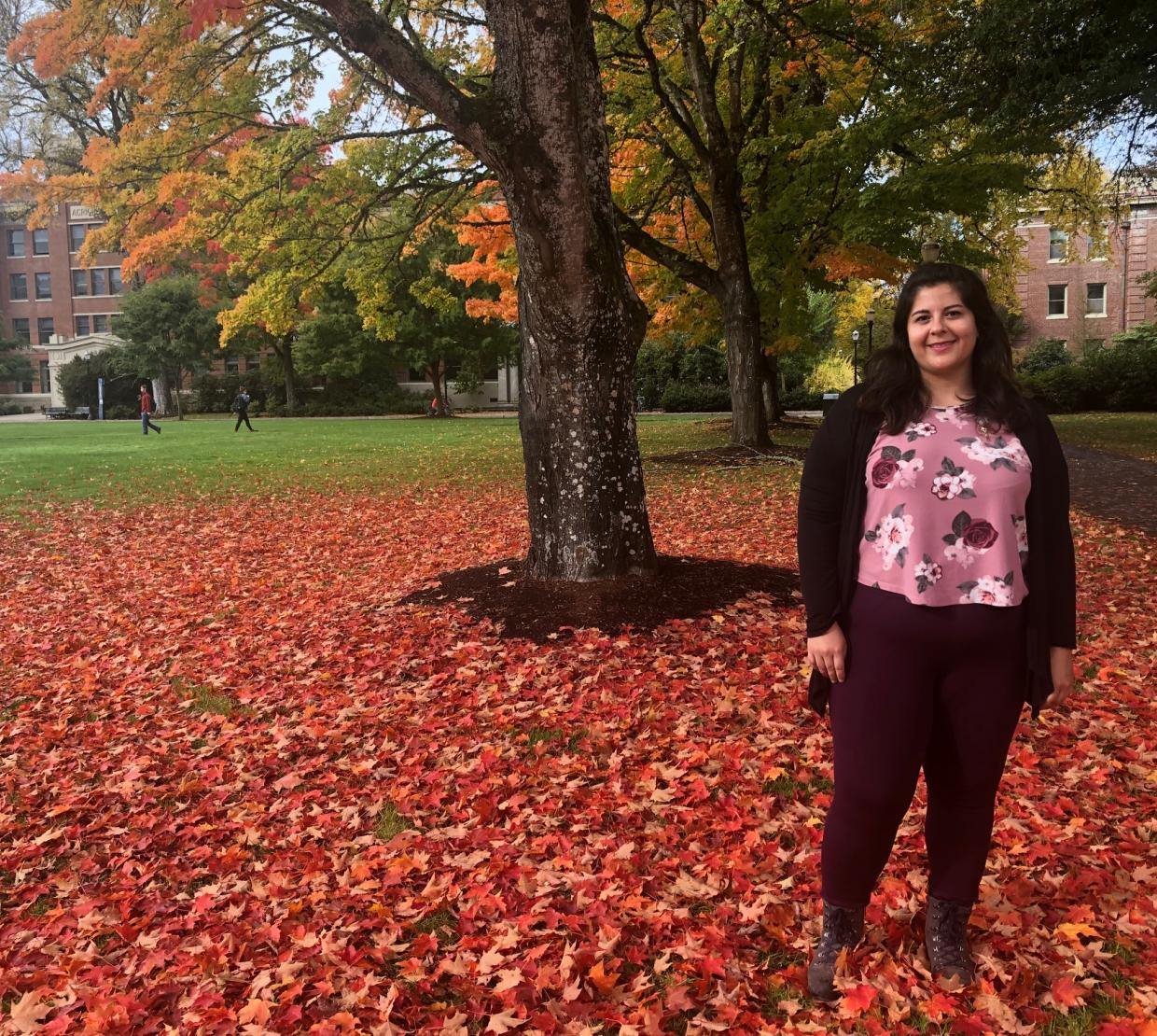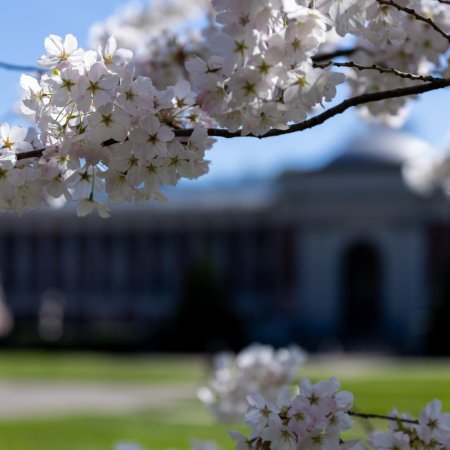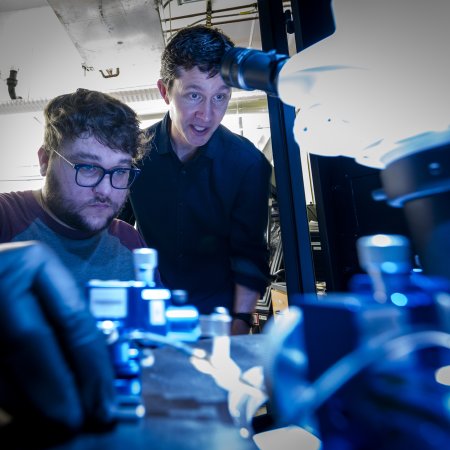Mathematics graduate student Ruby (Ali) Chick (M.S. ’20) is on a team with other graduate students from environmental science and fisheries and wildlife science that collaboratively analyzes the environmental impact of microplastics. The multi-disciplinary team is a part of the National Science Foundation Research Traineeship (NRT) program at Oregon State University, which has established a new paradigm of cross-disciplinary STEM graduate student education on campus. Since 2016, graduate students across Oregon State have studied and conducted research pertaining to the NRT project, “Risk and Uncertainty Quantification in Marine Science,” focused on the study, management and protection of ocean systems.
The NSF Research Traineeship Program is designed to encourage the development and implementation of bold, new, highly innovative and potentially transformative models for STEM graduate education training in high priority interdisciplinary research areas.
The four-year (2016-2020) $3 million NRT grant at OSU, led by Professor Lorenzo Ciannelli from the College of Earth, Ocean and Atmospheric Sciences (CEOAS), prepares a new generation of natural resource scientists and managers who combine mathematics, statistics and computer science with environmental and social sciences to address climate and policy problems in marine systems. To date, 44 OSU graduate students, including 12 M.S. and Ph.D. students from the College of Science, have been funded and trained by the NRT program.
Ali and her NRT graduate cohort have advanced their training via participation in a combination of communication workshops, national and international internships, technical coursework, peer-mentoring and transdisciplinary research projects. These projects are guided by knowledge gleaned from outreach, communities and stakeholder engagement, and by using mathematical and statistical models and data sets to study different issues pertaining to the marine environment. The trainees learn about the dynamics of coupled natural-human systems, the science of big data, risk and uncertainty quantification, and communication.
The NRT program began with a week-long immersive learning experience at the Hatfield Marine Science Center, where students like Ali got to learn about ocean acidification and the effects of climate change on ocean temperatures from different experts in marine science. “That was my first leap out of math into a different field of science. I learned a lot of new terms I wasn’t familiar with before. I feel more comfortable speaking out now in a multi-disciplinary setting,” Ali says.
For their core NRT project, “A systems-based understanding of microplastic impacts on ecological and human health,” Ali and her team members are studying the effects of socio-economic factors, such as the mother’s level of education, recycling habits and consumption patterns, on microplastic pollution in the ocean. Ali is currently preparing a mathematical model to determine the correlation between human action and the amount of microplastic pollutants that make their way to the ocean. Her goal is to come up with a robust model that can influence the way we consume and recycle plastic and other pollutants.
In addition, Ali will examine the disruptive effect that microplastics can have on the endocrine system of fish through mathematical modeling. This fits well within Ali’s masters thesis research which uses mathematical modeling, and computational techniques to study multi-scale models for the endocrine system in mammals with an aim to understand polycystic ovarian syndrome, a hormonal disorder common among women of reproductive age.
Ali, who holds a bachelor’s as well as a master’s degree in mathematics from University of Texas at Tyler, says the NRT program has exposed her, for the first time in her academic career, to disciplinary perspectives from other scientific fields as well as the social sciences. These cross-disciplinary collaborations are shaping the group’s analysis and research on human effects on marine systems. “We learned how to cut through jargon and speak a common language in our classes and workshops,” Ali observes.
Ali and her advisor Vrushali Bokil, a professor of mathematics, examine research questions from an interdisciplinary perspective during NRT research meetings as the group moves forward with its project. In addition to Bokil, the cohort is mentored by Susanne Brander (Environmental and Environmental Toxicology), Shawn Rowe (College of Education), and Ivan Irismendi (Fisheries and Wildlife).
The broader NRT training has been valuable for several reasons, not least because it enables graduate students to talk to scientists from different disciplines. “I learned to explore microplastic pollution from different perspectives. There is a human and political element to our discussions that was absent in my mathematics classes where conversations are more abstract,” Ali remarked. “Most importantly, I am very glad I had this experience of learning how to collaborate and communicate across disciplines with different scientists because it will help me when I enter the job market as an applied mathematician.”
Her work with NRT added a new dimension to exploring “how valuable mathematics can be” in solving real-world problems and the different ways she can contribute as a mathematician on a multidisciplinary team. “I discovered that mathematics is actually something I can use to assist other disciplines,” Ali observed.
The training will culminate in a thesis chapter that will outline the collaborative group project and solutions to the climate and policy problem in question. After graduation, Ali plans to continue working in a cross-disciplinary scientific setting in industry, aspiring to bring her skills as a NRT student to bear on her future projects.
As one of the core requirements of NRT, this summer Ali will pursue an internship at the Environmental Protection Agency (EPA) in Corvallis, working on improving forecasting models in the field of human epidemiology with Nathan Schumaker, courtesy faculty in the Department of Fisheries and Wildlife Science and an EPA scientist. They will combine mathematics and computer simulations to develop powerful epidemiological forecasting models, seeking to overcome the challenges and limitations posed by widely used traditional mathematical models. As an example, they hope to use a spatial simulation model to quantify how rates of disease spread and change based on complex real-world drivers such as population density, environmental conditions and landscape connectivity.
In addition to Ciannelli, Julia Jones (CEOAS), Ana Spalding (College of Liberal Arts), Flaxen Conway (Marine Resource Management) as well as statistician Alix Gitelman and mathematician Enrique Thomann from the College of Science form the team of co-principal investigators and core-members, on the NRT project.




